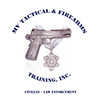For Home Defense — The Shotgun is Still King
By Brian Fitzpatrick
People frequently ask me questions about shotguns as the weapon relates to their home and family defense plan. Typically, these folks are considering which type of firearm to purchase for home defense, or whether the shotgun that has been collecting dust in their safe for years is still useful and relevant for self-defense in the Twenty-First Century. My answer is that under most circumstances, the shotgun continues to be the single most effective firearm platform for self-defense and the defense of your home or business.
Having served thirty-four years as a police officer and supervisor in Southern California, I went on duty every shift with a twelve-gauge shotgun riding next to me, locked in a car-rack. Initially it was with the pump action Remington 870 Wingmaster, and then later with the semi-automatic Benelli M-1 Super 90. As with many law enforcement agencies, my department adopted patrol rifles into our inventory in the aftermath of the Los Angeles Police Department’s February 28, 1997 North Hollywood shoot-out. For me, this involved carrying the H&K MP-5, 9mm sub-machine gun and later the Colt Commando, 5.56 mm NATO M-4 carbine. Luckily, neither of these long guns replaced our shotguns, but rode side-by-side with them in a second locking rack, thereby giving officers an additional tactical option based on circumstances in the field.
Despite having written my agency’s formal proposal for the adoption of patrol rifles and serving as an instructor, training department personnel in their use, I continued to consider the twelve-gauge shotgun—the predominant law enforcement shoulder weapon in post World War II America—as the most versatile and effective close quarter fighting firearm available. “Experts” can agree to disagree on which is the most advantageous weapon platform, but let’s just consider some points which I believe put the shotgun over the top as the most effective home defense weapon.
- The intimidation factor resulting from the mere presence of a shotgun is likely to cause a threat to cease and desist, as the sound of someone racking the slide (chambering a shotgun shell) is universally recognized as proof of superior firepower, and that you are deadly serious about defending your family.
- In close quarters, one round of 00 Buckshot will deliver nine .32 caliber pellets on target in a tight group with every press of the trigger. The shot pattern from a shotgun shell will expand roughly one inch for every yard it travels down range. So that, at a ten-yard distance, all nine pellets will be contained within a ten-inch diameter circle. Considering that the average adult male measures about eighteen inches shoulder to shoulder, if you’re called upon to employ lethal force in defense of your family, this will more than likely end the threat with one hit.
- Shotgun rounds are less likely to over penetrate through residential construction (interior walls and doors) than ammunition from rifles or even from pistols. This will greatly reduce the risk of unintentional injury caused by secondary projectile impacts on innocent residents or bystanders from rounds that penetrate through walls.
- When loaded with rifled slugs—a single, one-ounce lead projectile—a shotgun can be accurate and effective up to a one-hundred-yard range. If the need arises to take an intermediate range shot, you can selectively combat load a rifled slug, or other specialty round, into the shotgun receiver without having to unload your shells from the magazine tube.
- The operation and manipulation of a pump-action shotgun is very intuitive, making it easy for most shooters to be combat effective with modest training.
- A tactical shotgun with an extended magazine tube can have up to a seven or eight round capacity, not including a round in the chamber. Extra rounds can be quickly and individually loaded as soon as a shell is fired or ejected, keeping the weapon “topped off” (fully charged) always during an engagement. This is a definite tactical advantage over a California legal (“bullet button”, post-assault rifle ban) rifle, which requires a tool to remove the maximum ten round magazine.
- When a fighting shotgun and a handgun are deployed in a two-gun package, the user will be able to defeat a wide variety of tactical threats.
- In an emergency, even a police “riot gun” short-barrel shotgun can be used to hunt for food, especially if birdshot is available.
- Quality pump action shotguns, such as the Remington 870, Mossberg 500, Winchester Defender, and the Ithaca Model 37 are all affordably priced.
- Shotguns are easily adaptable to address specific situations by attaching accessories, such as slings, extra shell carriers, weapon lights, and enhanced sighting systems.
Is the shotgun the end all solution to all armed threats? Of course it isn’t. But nothing else will deliver a more devastating kinetic impact within its effective range of eighteen to twenty yards.
The shotgun might not be the only answer, but for home defense, it will be the most effective weapon for many people. According to law enforcement trainer and author Mike Boyle, “Much has been made of the fact that shotguns might not be the best tool for dealing with heavily armed subjects wearing body armor or against domestic terrorists with rifles. I couldn’t agree more. But, just as you wouldn’t play a round of golf with a single club, I would submit the rifle is a better tool for the above listed scenario. On the other hand, shotguns can still effectively manage the most common threats requiring an armed response.”[1]
There will always be a demand for the tactical shotgun. And for most home and family defensive applications, I firmly believe that the shotgun is still the king.
[1] Boyle, Mike. Article—“Shotguns for the 21st Century Warrior, Part One,” (Dec. 20, 2011) http://www.policeone.com/police-products/firearms/shotguns/articles/4837351-Shotguns-for-the-21st-Century-warrior/ (accessed April 28, 2015)
